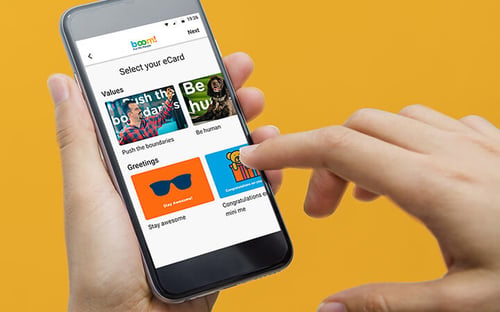4 min read
Are you staying on track with your reward and recognition strategy? Do you feel like you’ve secured the budget and resources to achieve what you set out for? Whether you’re just starting out on your journey, or you’re right in the middle of building your business case, there’s always room for a refresher, especially if you want to retain and engage your top performers.
Consider the cost of replacing an employee – generally at a 100-person company with an average salary of $50,000, you're likely to spend up to approximately $1.5 million a year in turnover costs.
Over the years, I’ve worked with hundreds of HR professionals and this is one question I get asked all the time: How do you set attainable goals, build the business case for investing in your people and get your leadership team on board?
For one organization in particular, Presbyterian Homes, an independent, not-for-profit and faith-based family of luxury communities in the Chicago area, this was top of mind. In a recent webinar, Miriam Wallace, SPHR at Presbyterian Homes joined us to discuss how she worked towards improving employee retention and creating a culture of appreciation across all locations. Let's dive into how she overcame obstacles and set realistic goals.

Q: How do you prove the ROI of the new program or initiative?
Miriam: You have to determine where to start. Your leadership team will want to see what it will do for the organization. They’ll want to see the ROI and know that they’re spending money on the right initiatives.
I suggest reaching out to colleagues, looking at benchmark information in your industry, looking at employee retention rates and then comparing how your retention stacks up against other organizations in your industry. Then consider if some of your colleagues who are using the recognition platform are seeing a very positive impact on retention, or other areas like customer service or resident satisfaction.

Q: How do you know what’s the most important metric to measure?
Miriam: There are lots of areas to measure, but the most important thing is to get started. You can’t get started on your engagement survey unless you have the dollars to actually do it. Set realistic goals and then measure them. Maybe you’re measuring customer satisfaction because you often see a correlation between engaged staff and happy customers.
Then there are other metrics that we sometimes forget to focus on – like new hire retention. We know culture is the number one reason that people join and leadership is the number one reason for leaving, which is again an important driver of culture. It’s key to enhance company culture, re-invigorate and demonstrate those behaviors, and then reinforce this through engagement and recognition efforts.
Q: How do you make sure to keep a pulse on your engagement initiatives?
Miriam: The one thing I'd say is that it's not enough to just do a survey because a lot of the times, not enough time is given to looking at the results and putting together actions. Make sure you’re integrating your peer-to-peer recognition initiatives into everything you do because you want to keep things fresh and updated. One example could be showcasing the actions taken to address survey results throughout the year all the way to the next survey.
Alongside surveys, people are going to submit recognitions every day and it helps to go back, focus on your mission, your vision, your values and look at the behaviors that are supporting those values.
That’s the secret sauce behind all of this – recognizing key behaviors as you’re developing your recognition programs because that’s your culture.

Q: Can you tell us a little bit about how your employees interact with your employee recognition program?
Miriam: We’re a senior living organization so a lot of our employees don’t have access to computers. It’s important that they’re able to submit recognitions via the mobile engagement platform. Employees love it because they can do it very quickly and easily, and from any location.
We also have physical recognition cards which our staff and residents use if they’re not comfortable with the technology yet. We saw an increase in participation when we introduced the cards and residents especially love them.
Q: Miriam, can you explain how you approached your leadership team and started building the business case?
Miriam: Here at Presbyterian Homes, I was very fortunate that our COO Nadim Abi-Antoun had already started to champion looking at employee recognition. That was a gift to me because I already had some buy-in from senior leadership. I have to say, that's really the ingredient that you need to make this a success. Aside from that, my biggest piece of advice is to try many different approaches to get buy-in.
Follow Miriam’s advice and start with the leadership team, build the business case, get your industry benchmarks together and set some realistic goals. Consider if there are other areas where you can pull resources or budget from to support and fuel your reward and recognition strategy.
Stay tuned for the next blog where Miriam talks about the different levels of recognition and how she encourages manager and leader participation.

%20(1).jpeg) Alexandra Powell
Alexandra Powell


